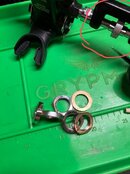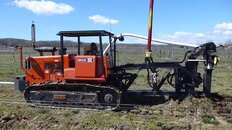7 thread Vs 9 thread is the spec, but most combi valves are only 5 threads. That would be 0.35" or just over 3/8". That was calculated based on 5/8-14 BSP (parallel).
If it’s two turns then it is:
1/14 = .071
.071 x 2 = .142
I was ASSuming 2.5 turns when I came up with it .178”
Also, 3/8 is .375” so just under if you were aiming for .350






